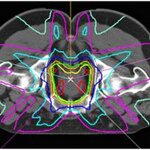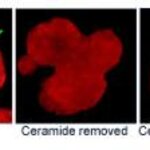Cancer Research

Cancer cells are sick, but they keep growing because they don't react to internal signals urging them to die. Now researchers at Washington University School of Medicine in St. Louis have found an efficient way to get a messenger into cancer cells that forces them to respond to death signals. And they did it using one of the most sinister pathogens around — HIV.
"HIV knows how to insert itself into many different types of cells," says senior author William G. Hawkins, M.D., assistant professor of surgery and a member of the Siteman Cancer Center at the School of Medicine and Barnes-Jewish…

Nanotechnology is one of the ‘next big things’ in our future. People have elevated it to a level of near worship as the way to solve, and in some cases revolutionize a number of areas of human life. It certainly has that potential, but nanotechnology will take us into uncharted areas and we must be cognizant of both benefits and potential liabilities. .
Basically it is an application of existing science and manufacturing taken down to the atomic level with the use of nanoparticles. Nanoparticles are usually defined as clusters of atoms and molecules, used in an…

A new computer-based technique could eliminate hours of manual adjustment associated with a popular cancer treatment. In a paper published in the Feb. 7 issue of Physics in Medicine and Biology, researchers from Rensselaer Polytechnic Institute and Memorial Sloan-Kettering Cancer Center describe an approach that has the potential to automatically determine acceptable radiation plans in a matter of minutes, without compromising the quality of treatment.
Prostate CT: The automatic radiation planning algorithm results in beamlet intensities that produce equal-dose contours. The prostate (center…

A provocative new model proposed by molecular biologist John Tower of the University of Southern California may help answer an enduring scientific question: Why do women tend to live longer than men?
That tendency holds true in humans and many other mammals as well as in the much-studied fruit fly Drosophila melanogaster.
In genetic studies of Drosophila, Tower and his team have shown that genes known to increase longevity always affect male and female flies differently.
"For a long time, we only did experiments in one sex or the other, depending on what was convenient," said Tower, an…

As the second leading cause of death in the world, cigarette smoking is a preventable behavior. Most countries require warnings about health risks on every package, but the effectiveness of these warnings depends upon the design and the "freshness" of the messages. In a multi-country study published in the March 2007 issue of the American Journal of Preventive Medicine, researchers found that more prominent text messages were more effective and graphic pictures even more so in affecting smokers' behaviors. Recent changes in health warnings were also associated with increased effectiveness,…

Researchers at the University of Illinois at Urbana-Champaign have developed a novel computational image-forming technique for optical microscopy that can produce crisp, three-dimensional images from blurry, out-of-focus data.
Called Interferometric Synthetic Aperture Microscopy, ISAM can do for optical microscopy what magnetic resonance imaging did for nuclear magnetic resonance, and what computed tomography did for X-ray imaging, the scientists say.
Photo courtesy of Beckman Institute
Representations of a tissue phantom where the scattering points
would represent cells, and images before…

Investigators from the Ludwig Institute for Cancer Research (LICR) and the University of California, San Diego (UCSD) have made a breakthrough in identifying functional elements in the human genome, according to a report published online today in Nature Genetics.
While the DNA sequence can identify genes (the ‘what’) within the genome, it cannot answer the more fundamental questions of ‘how,’ ‘when’ and ‘where’ gene products are expressed. However, the LICR team and collaborators have developed a novel method to identify and predict the ‘promoter’ and ‘enhancer’ regions that switch on…

A little-known lipid plays a big role in helping us grow from a hollow sphere of stem cells into human beings, researchers have found.
They found that in the first few days of life, ceramide helps stem cells line up to form the primitive ectoderm from which embryonic tissues develop, says Dr. Erhard Bieberich, biochemist at the Medical College of Georgia.
Probably 90 percent of ceramide gathers at the top or apical end of these early stem cells, literally helping cells have direction. “We have cell polarity, an up and down, a head and foot of the cell, and that is what ceramide most likely…

I think, after 2 and a half months of blogging, it's time to tell you my dream. I'm nearly sure about that this dream wouldn't come true in my lifetime. I dream about a total screening for genetic conditions and diseases. When you are born, your DNA is screened for well-known variations and gene abnormalities. These variations lead to increased risk for some kind of diseases. Now, I'm not talking about only monogenic disorders, but multifactural ones: heart disease, gout, some types of cancer.
A predictive gene test can determine if you have gene mutations that increase your chances of…

Researchers at Canada's National Institute for Nanotechnology (NINT) are learning which molecular scale factors affect the assembly and disassembly of microtubules that are part of a cell's skeleton. Microtubules control the division of all cells with a nucleus by constantly assembling at one end while they disassemble at the other. Failure in either of these processes can lead to abnormal cell division causing improper development of an organism, incomplete differentiation of a tissue, or uncontrolled cell division, as in cancer.
The research of Andriy Kovalenko, Leader of NINT's Theory and…